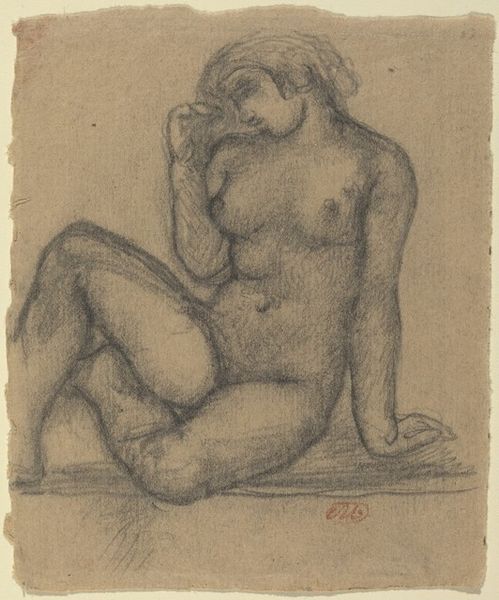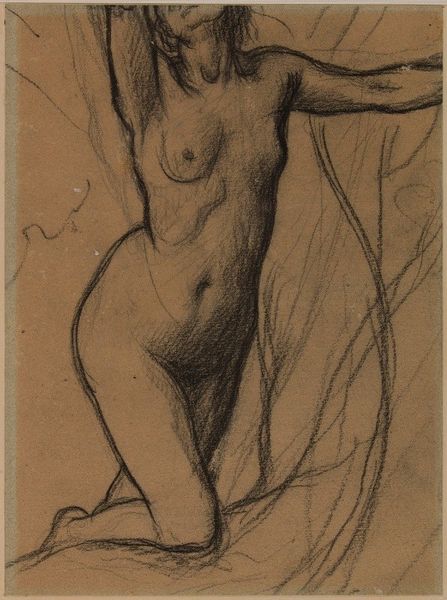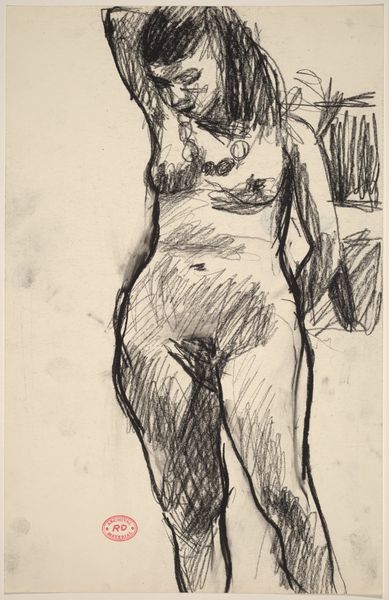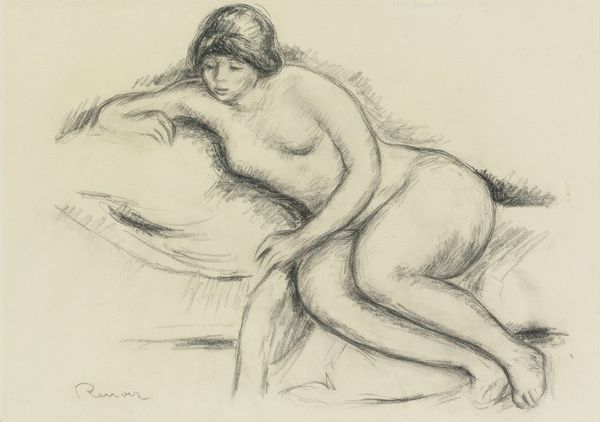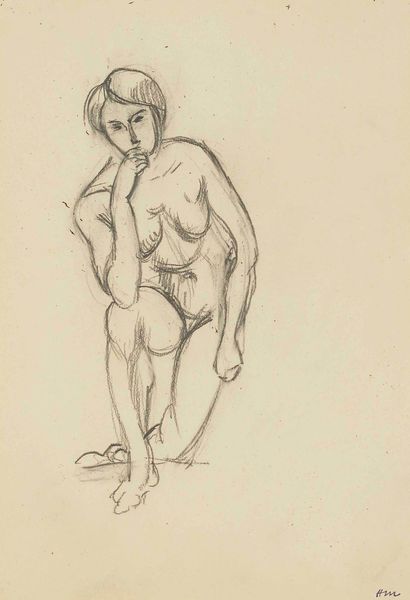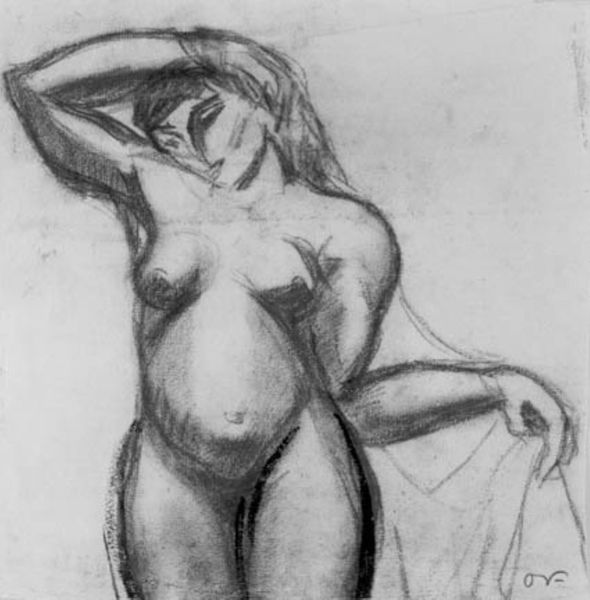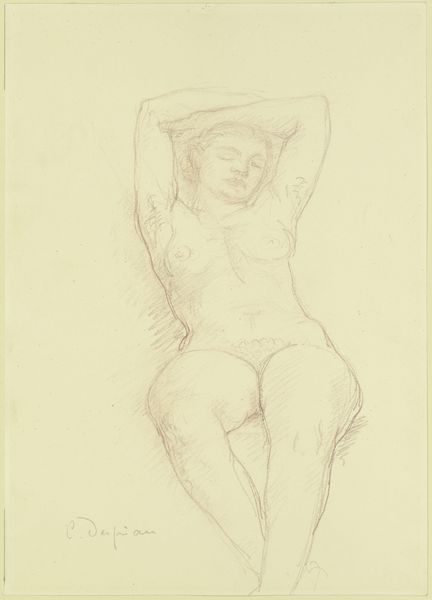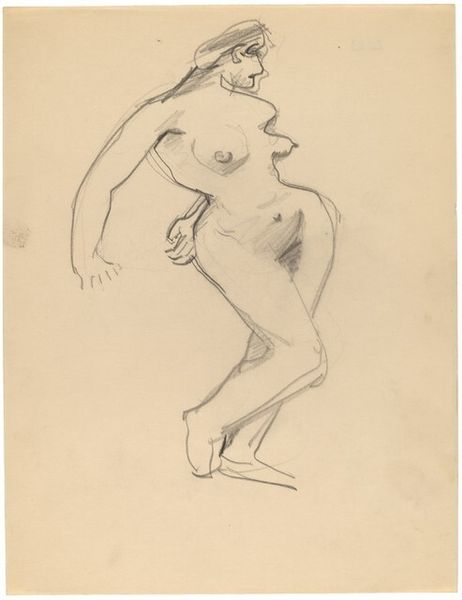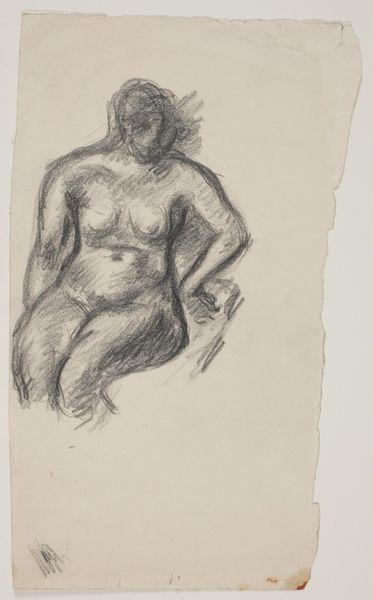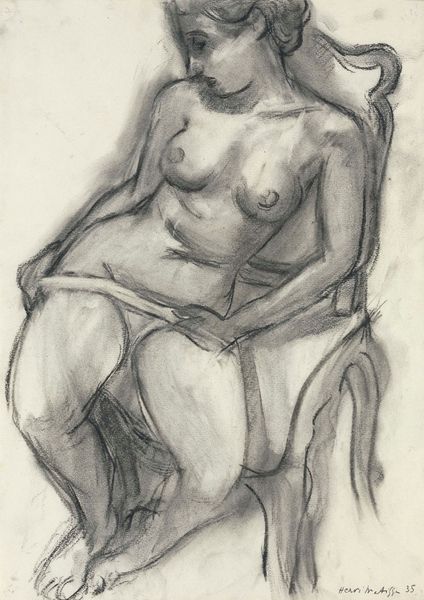
drawing, pencil
#
drawing
#
pencil drawing
#
pencil
#
portrait drawing
#
academic-art
#
nude
Copyright: Public Domain: Artvee
Editor: This drawing, "Femme nue, à demi-étendue" by Pierre Puvis de Chavannes, seems like a preliminary sketch. It has such a fleeting, ethereal quality. What do you see in this piece? Curator: Immediately, I see the Venus Pudica, that ancient gesture of modesty, the figure shielding her face, and a loaded visual language. But, is it modesty? Or perhaps, concealing some emotion or experience? What story does this posture evoke for you? Editor: I think the woman seems contemplative, perhaps melancholic, not necessarily hiding shame. The pose feels very human, immediate. Curator: Precisely. It's less about idealizing the nude and more about portraying a state of mind, a human condition. The unfinished quality even enhances this vulnerability, as though we're glimpsing a private moment. Do you find a connection to other visual representations of women from that time? Editor: Maybe in its realism, a bit like Courbet, but with a softer, more dreamlike quality. Less confrontational, more internal. Curator: Good point. It is less overtly rebellious than Courbet. This softness invites us to consider the psychological interiority of the figure. Puvis de Chavannes, rather than rejecting tradition, used its visual vocabulary to explore something deeply personal. What did you take away from this? Editor: I learned to look for the underlying emotions and psychological depth in familiar poses and appreciate the cultural weight that images can carry. Curator: Yes, and the ability of art to transform these visual symbols across generations. Thank you!
Comments
No comments
Be the first to comment and join the conversation on the ultimate creative platform.
